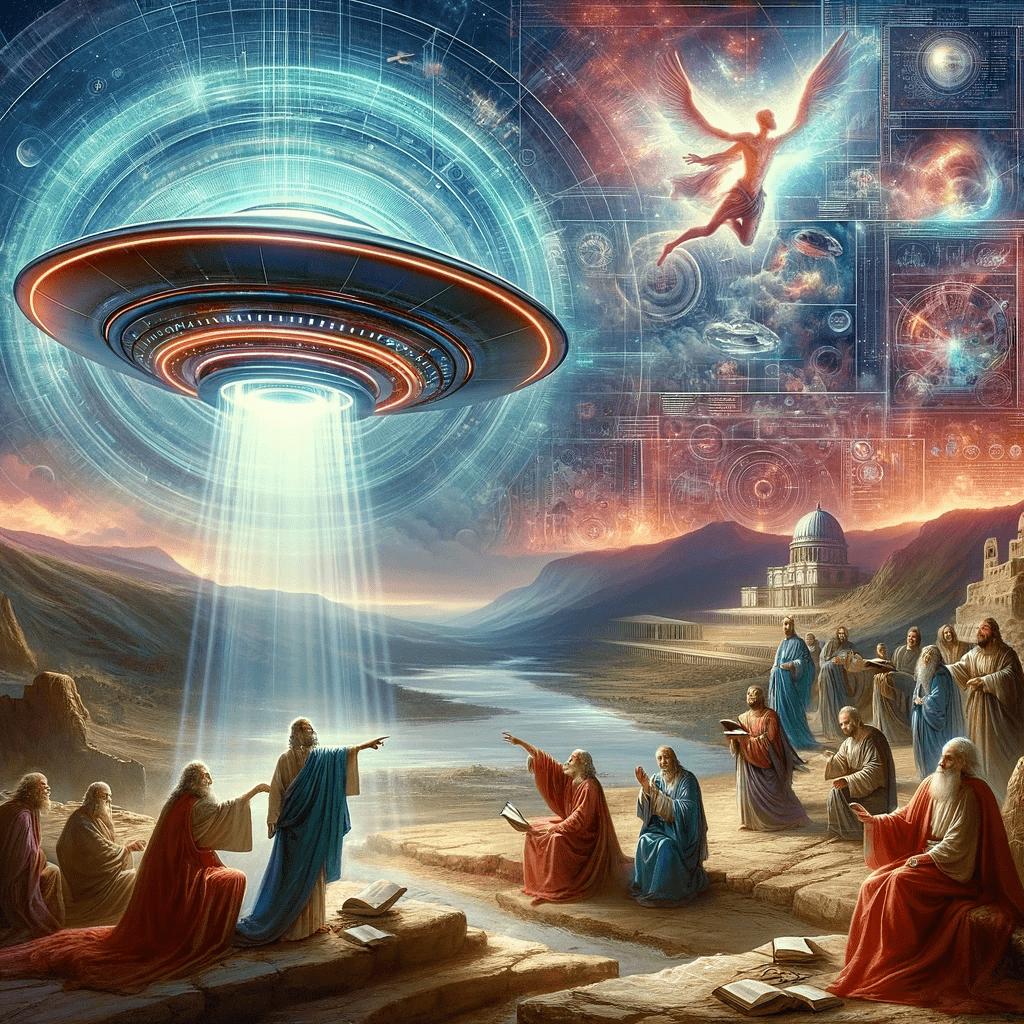Mauro Biglino’s Analysis of UAPs and Ancient Biblical Narratives

Mauro Biglino, an Italian author and researcher, is a highly regarded scholar of ancient Hebrew. He has worked as a Bible translator for Rome’s Saint Paul press, where he focused on providing the literal meanings of Hebrew words for Vatican-approved interlinear Bibles. His approach to biblical translation, which prioritizes literal and etymological meanings over traditional interpretations, has led to findings that challenge conventional perspectives, particularly within the Catholic world. His work suggests that the cultural memory recorded in the Bible has been obscured by translation errors and religious dogmas.
Paul Wallis is an internationally best-selling author, researcher, and scholar of ancient mythologies. His background includes serving as a Senior Churchman in the Anglican Church in Australia, where he was involved in roles such as Church Doctor, theological educator, and Archdeacon. Wallis has a strong focus on interpreting biblical texts, which has led him to uncover layers of ancient stories with significant implications for our understanding of human origins and our place in the cosmos.
In their respective works, both Biglino and Wallis offer radical reinterpretations of the Bible, focusing on the original translations and meanings of key words in the ancient texts. For example, they explore the word “Olam” among others to reveal different narratives hidden in the Bible. They argue that the Bible’s original texts tell a different story from what is traditionally understood, suggesting that the narratives are not about a single God but about multiple powerful beings, referred to as “Elohim,” who are not spiritual deities but rather flesh-and-blood individuals with advanced technology. This interpretation proposes that terms often translated as “the Glory of God” or “spiritual phenomena” might actually refer to advanced, physical technology.
Their analysis particularly focuses on the Hebrew word “Kavod,” traditionally translated as “glory.” They argue that Kavod refers to something concrete and powerful, potentially a kind of advanced technology or armament, rather than a spiritual entity. This interpretation is supported by various passages in the Bible where the term appears in contexts suggesting physical manifestations and effects.
The work of Biglino and Wallis invites a re-examination of biblical texts, urging readers to consider the possibility that the Bible could be a record of encounters with advanced beings and their technology, rather than purely spiritual accounts. This perspective challenges long-held religious beliefs and interpretations, opening new avenues for understanding human history and our place in the universe.
Biglino’s discussion about the parallels between modern Unidentified Aerial Phenomena (UAP) sightings and ancient biblical accounts is intriguing. He suggests that the extraordinary encounters and visions described in the Bible might be early accounts of similar phenomena to what we today classify as UAPs. This connection is based on the similarities in descriptions of objects and events that appear otherworldly or beyond the understanding of the time.
- Ezekiel’s Vision: Ezekiel’s account is one of the most cited in discussions of UAPs in the Bible. He describes a “flying chariot” and beings with the appearance of humans surrounded by bright lights and wheels within wheels that moved along the ground. The level of detail in Ezekiel’s descriptions, including the sounds and movements of these objects, aligns with some modern UAP sightings, where observers report advanced, seemingly physics-defying technology.
- Elijah’s Ascension: Elijah’s departure from Earth in a “chariot of fire” that ascends into the sky is another instance that Biglino might correlate with UAP sightings. The description of a fiery vehicle ascending into the heavens could be interpreted as an encounter with an advanced aerial craft, much like modern reports of UAPs.
- Enoch’s Experiences: The Book of Enoch, although not part of the standard biblical canon, is rich with descriptions of heavenly ascents, interactions with “angels,” and visions of the heavens. These experiences, characterized by Enoch being taken into the sky and shown various wonders, could be paralleled with abduction or close encounter experiences reported in modern UAP cases.
- Noah’s Ark: While not directly linked to UAPs, Noah’s story involves divine instructions to build a massive ark to survive a great flood. Biglino might interpret this as an allegory for more advanced knowledge or intervention by otherworldly beings, akin to theories of ancient astronauts or UAPs providing advanced knowledge or warnings to humans.
- Moses’ Encounters: Moses’ experiences, such as the burning bush and the encounter on Mount Sinai where he receives the Ten Commandments amidst thunder, lightning, and a thick cloud, bear hallmarks of contact with a higher power or intelligence. These events, especially the Sinai encounter with its accompanying environmental effects, could be likened to UAP encounters where witnesses describe profound, often physically manifesting experiences.
- Zechariah’s Visions: Zechariah’s prophetic visions include detailed descriptions of flying scrolls and other objects that seem to defy the understanding of the time. The descriptions of these objects moving in the sky and their mysterious nature could be construed as ancient accounts of UAP sightings.
Biglino’s approach in drawing these parallels seems to be based on a literal interpretation of these texts, suggesting that the biblical authors were describing real, physical events and objects, rather than purely spiritual or symbolic visions. He contrasts this with the UAP phenomena, where there are contemporary witnesses and, in some cases, physical evidence or recordings, thus providing a more concrete basis for investigation and validation compared to the ancient accounts.

